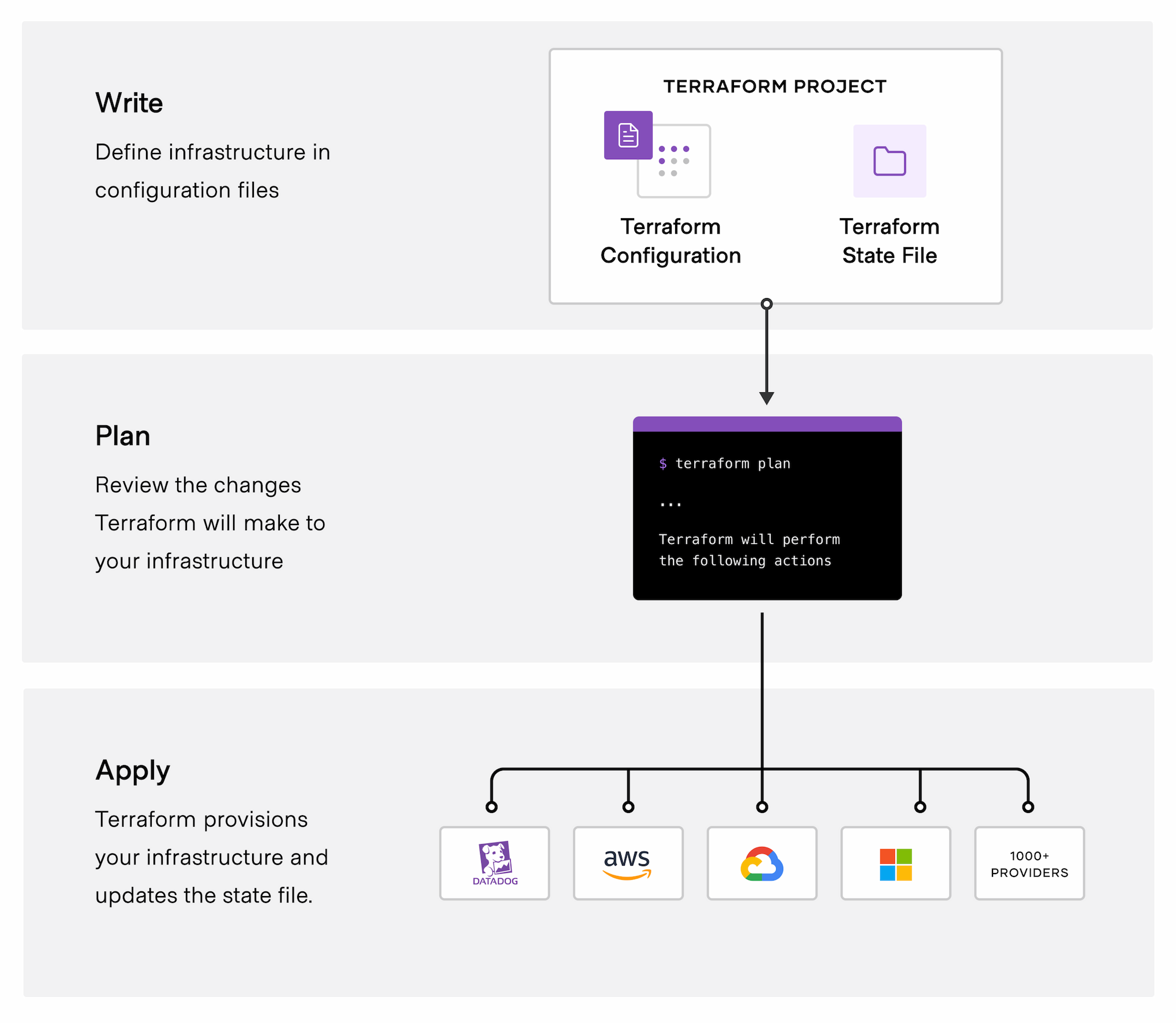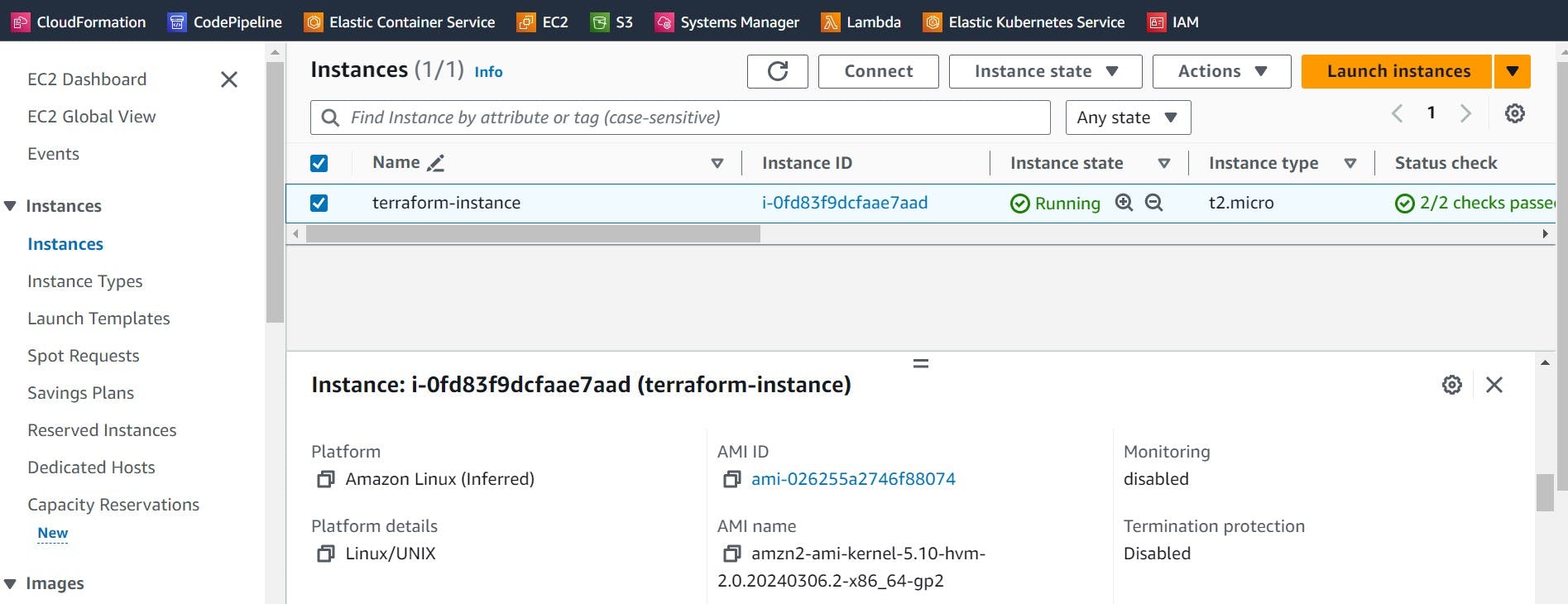Introduction
In today's rapidly evolving tech landscape, managing infrastructure efficiently is crucial for businesses to stay competitive. Traditional manual methods of infrastructure provisioning and management are time-consuming, error-prone, and lack scalability. This is where Infrastructure as Code (IaC) comes into play.
What is Infrastructure as Code (IaC)?
Infrastructure as Code (IaC) revolutionizes the way we handle provisioning and management tasks. Unlike the traditional manual approaches, IaC empowers developers and system administrators to define and manage infrastructure configurations using code.
With IaC, configuration files are created that contain your infrastructure specifications, which makes it easier to edit and distribute configurations. It also ensures that you provision the same environment every time.
How Terraform Works?
At the core of infrastructure management, Terraform serves as a versatile orchestrator, seamlessly crafting and overseeing resources across cloud platforms and services via their respective APIs.
Providers enable Terraform to work with virtually any platform or service with an accessible API.

The core Terraform workflow consists of three stages:
Write: At First you define the resources that may be across the multiple cloud providers and services.
Plan: Terraform will create an execution plan depending on the infrastructure and show the plan that will it create, update, or destroy.
Apply: While performing the Terraform apply on approval, it will perform the desired operation in the correct order.

Why Terraform?
Introduce Terraform as one of the leading tools for implementing IaC. Discuss its popularity and the reasons behind its widespread adoption in the industry.
Key Concepts of Terraform:
Manage any infrastructure:
Terraform can manage many providers and multi-cloud providers that are already present in the Terraform registry and can also write their own provider.
Terraform takes an immutable approach to infrastructure, reducing the complexity of upgrading or modifying your services and infrastructure.
Automate changes:
Terraform configuration files are declarative, meaning that they describe the end state of your infrastructure.
You do not need to write step-by-step instructions to create resources because Terraform handles the underlying logic.
State Management:
Terraform maintains a state file to track the current state of managed infrastructure. This file is crucial for tracking changes and facilitating updates without disrupting the infrastructure
Collaborate:
Since your configuration is written in a file, you can commit it to a Version Control System (VCS) and use Terraform Cloud to efficiently manage Terraform workflows across teams.
Setting Up Terraform and Creating First Configuration:
Step1:
Now let's install the terraform on the local machine to get started with the terraform
Terraform is available for various operating systems, including Windows, macOS, and Linux. You can download the appropriate binary from the https://developer.hashicorp.com/terraform/install
The simple way to install Terraform if you are using Windows is to install Terraform through Chocolatey.
Open the terminal in administrator mode and enter the command as:
choco install terraform
You can verify the installation by running
terraform --versionin your terminal/command prompt.Now that Terraform is set up, let's dive into creating your first Terraform configuration.
Step2:
Start by creating a new directory for your project and navigate into it using your terminal/command prompt.
mkdir my_terraform_project
cd my_terraform_project
- Before provisioning resources on AWS using Terraform, you need to configure the AWS provider. This involves specifying authentication credentials and the desired region in a
providers.tffile.
# providers.tf
# Configure the AWS provider
provider "aws" {
region = "ap-south-1"
}
- To initialize a new Terraform configuration, you need to create a
.tffile. This file will contain your infrastructure specifications written in HashiCorp Configuration Language (HCL). For example, let's create a simple configuration file namedmain.tf:
# main.tf
# Define an AWS EC2 instance
resource "aws_instance" "example" {
ami = "ami-0c55b159cbfafe1f0"
instance_type = "t2.micro"
tags = {
Name = "terraform-instance"
}
}
- In this configuration, we're defining an AWS EC2 instance using the
aws_instanceresource block. We specify the Amazon Machine Image (AMI) and the instance type for the EC2 instance.
Step3:
- After creating your Terraform configuration file, you need to initialize Terraform within your project directory. Run the following command:
terraform init
- This command initializes Terraform and downloads any necessary plugins or dependencies required for your configuration.

- After terraform init, perform terraform plan to see what it will create, update or destroy.
terraform plan

- Apply the Terraform configuration to create the EC2 instance on AWS.
terraform apply
- Terraform will display an execution plan showing the actions it will take. Confirm the plan to proceed, and Terraform will provision the EC2 instance according to the defined configuration.

EC2 instance is now running which is managed by Terraform.
Conclusion
In this first blog post of TWS TerraWeek Challenge, we've explored the fundamentals of using Terraform to manage infrastructure as code (IaC) and its integration with AWS for provisioning resources.
Terraform offers a powerful and flexible approach to infrastructure management, allowing users to define and manage infrastructure configurations using code.

